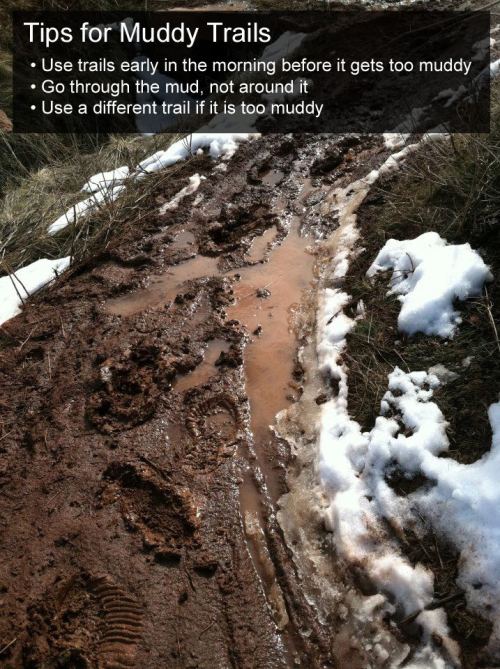Pondering the big thaw

(Originally published in The Sewanee Messenger. Reproduced by permission.)
If you go out often enough, even to the same old places, new things can happen.
I’ve found that out during the recent warming and thawing here on the Mountain. The unusual cold and weeks of snow and ice saturated the ground, so that the rising temps turned the trails into super-boggy messes.
Streams trickled down the middle of usually-dry paths. Small puddles overtook entire stretches of fire lanes. There was no high ridge on which to walk, no solid island to hop to. Walking these daily routes suddenly was impossible — forget running or cycling.
Suddenly, unexpectedly, everything was changed about my relationship to these places. When every step alters the landscape, one is not just visiting, just seeing, just enjoying or using a place. One is inevitably changing it, in visible and meaningful ways.
You have to decide whether or not to use the place as you normally can. Whether your effect on it will be more than you think appropriate. Whether your conscience can live with what it will look like once you’ve passed through.
In that instant, the relationship changes and deepens. It is a micro version of a larger conversation: how lightly to live on the earth. What ways of living to choose, and what to give up, out of concern for what will be left behind. The difference, though, is that here it’s not theoretical. The coal-burning power plants and Arctic ice are far away; the trail is right here, right now, every afternoon around 2:30.
If one chooses to go out, regardless, in these conditions, the shoe-sized impacts, the gouges into the land, are right there on the trail. Will they be permanent, or even long-lasting? Will the passage of time, the drying and warming of a Sewanee summer, smooth out the trail, erode my footprints back into a flat surface for all who pass by?
Or will my choices, added to the decisions of others, add up to a pitted, potholed mess, a blight in the woods?
It’s possible that these trails have gone through this cycle dozens if not hundreds of times: that the flat, dry paths I have used were at various times rutted, puddled, detoured around, chewed up, but then over time, by the natural eroding and filling of dirt, sand, rocks, have settled down again, like leaves in a windstorm, finding equilibrium again. Someone with more experience might know. Later, in May and June, I’ll try to remember to look at the worst places, where people (including me) hopped around the edges of the trail mess, to see what they’re like.
It will be comforting if I find that the trails have indeed healed themselves. We humans are on an unprecedented experiment, changing the planet more thoroughly than has ever been done in recorded history. We don’t know what will heal itself, and what is irreparably changed. Every instance of a place being able to return to some sort of good condition, even if it’s not ‘pure’ — whatever that means — will bring a sigh of relief.
Meanwhile, I decided to stay off the trails and wait out the drying of the worst, boggiest areas. I walked the dog in town and left the mountain bike in the shed. I’ll hope that others make similar decisions, and avoid the worst areas. If they do, we’ll all be enjoying the trails soon enough.